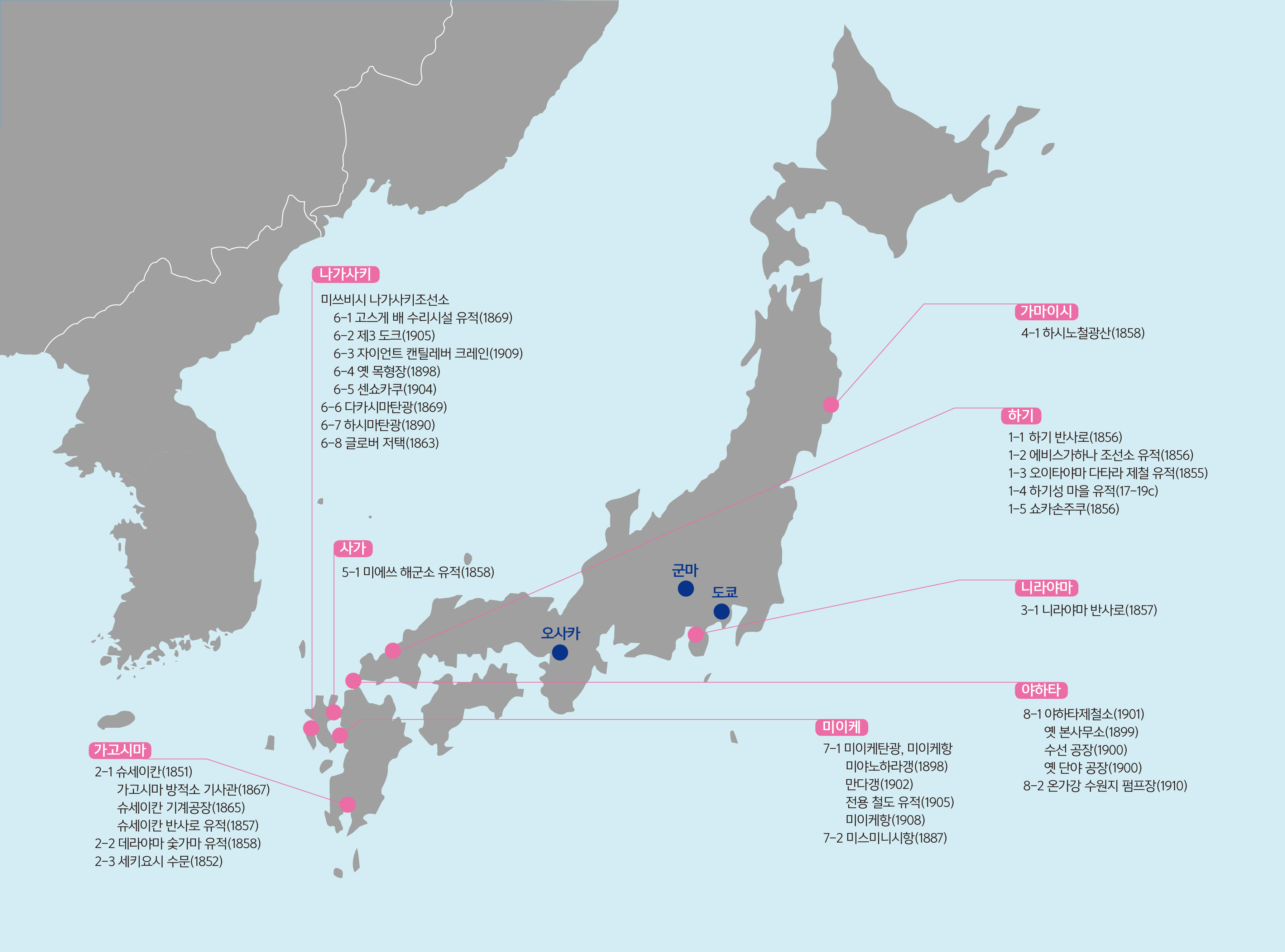- Japan's Meiji Industrial Revolution
- Sites of Distorted Facts and Concealed Truth
Japan's Meiji Industrial Revolution
Table of Contents Open Contents
- 1 Inscription of the Sites of Japan’s Meiji Industrial Revolution and Denial of History
- 2 Historical Facts behind the Sites of Japan’s Meiji Industrial Revolution
- 3. Succession of Memory and World Heritage
- 4. Vanished Voices, Vanished History
- 5. Forced Mobilization and Labor as Seen in Textbooks
-
6. Related Materials
-
6-1 Korean Government Fact-finding Report
- Fact-finding Investigation into Damages on Koreans Under Atomic Bombing of Hiroshima and Nagasaki, 2011.7.
- Investigation into Damages of ‘Double Conscription’ in Sakhalin, 2007.8
- Basic Investigation through Death Records into Conditions of Korean Victims of Forced Mobilization to the Hashima Coal Mine, 2012.12
- Fact-finding Investigation into Korean Deaths through Cremation Permits in Sakito-cho, Nagasaki Prefecture - 2011.6.
- 6-2 Appeal from the Victims
-
6-1 Korean Government Fact-finding Report
1-1-0 “Unfulfilled Promises” [Video]
Unfulfilled Promises
Produced by Korean National Commission for UNESCO on March 22, 2020
1-1-1 Sites of Japan’s Meiji Industrial Revolution Became World Heritage Sites
At the 39th session of the UNESCO World Heritage Committee on July 5, 2015, the Sites of Japan’s Meiji Industrial Revolution including Gunkanjima (also known as Battleship Island) were inscribed on the World Heritage List. The inscription of the sites eventually took place despite the opposition of victims from the concerned parties such as Korea, China, the Netherlands, and the United States who claimed that the historical facts of forced mobilization were being ignored. At the time of the inscription, the World Heritage Committee made a recommendation in its decision that Japan should "prepare an interpretive strategy to understand the full history of each facility," and in response, the representative of Japan promised to take specific follow-up measures to sincerely comply with this recommendation.
The Sites of Japan’s Meiji Industrial Revolution encompasses a series of twenty three parts, scattered over eight prefectures and 11 cities. These sites are mainly located in the Kyushu and Yamaguchi areas, with a historical period for the sites ranging between 1850s and 1910. Japan could successfully inscribed these facilities on the World Heritage List by presenting them as a symbol of the first successful transfer of Western industrialization to a non-Western nation.
· Five sites in Hagi area:
Hagi Reverberatory Furnace (a smelting furnace used in the casting of iron cannons), Ebisugahana Shipyard, Ōitayama-tatara Iron Works (manufacturing for ship parts), Hagi Castle Town, and Shōkasonjuku Academy (educational facility).
· Three sites in Kagoshima area:
Shūseikan (ship and cannon casting facilities), Terayama Charcoal Kiln (charcoal for fuel), and Sekiyoshi Sluice Gate of Yoshino Leat (waterpower to drive machinery).
· Eight sites in Nagasaki area:
Kosuge Slip Dock, Mitsubishi No. 3 Dry Dock, Mitsubishi Giant Cantilever Crane, Mitsubishi Former Pattern Shop, and Mitsubishi Senshokaku Guest House, Takashima Coal Mine, Hashima Coal, and Glover House and Office.
· Two sites in Miike area:
Miike Coal Mine and Miike Port, and Misumi West Port.
· Two sites in Yawata area:
Imperial Steel Works Office, and Onga River Pumping Station (water supply for steel works).
· Three sites in other areas:
Nirayama Reverberatory Furnace in Nirayam (Shizuoka Prefecture), Hashino Iron Mining and Smelting Site in Kamaishi (Iwate Prefecture), and Mietsu Naval Dock in Saga (Saga Domain).
Among these 23 sites, the facilities that symbolize both the industrialization of iron and steel, shipbuilding and coal mining during the Meiji period as well as the controversy of forced labor on Koreans and others are Yahata Steel Works, Nagasaki Shipyard, Takashima Coal Mine, Hashima Coal Mine, and the Miike Coal Mine.
Map of Japanese industrial heritage sites download
Map of Japanese industrial heritage sites
Just as reflected in its official name ‘Sites of Japan's Meiji Industrial Revolution: Iron and Steel, Shipbuilding and Coal Mining,’ the property testifies the success story of the Japanese-style "industrial revolution" by linking the attempts by the Chōshū and Satsuma Regions (present-day Yamaguchi and Kagoshima Prefectures) that led the Meiji Restoration and the steel, shipbuilding and coal mining at sites such as the Yahata Steel Works, Nagasaki Shipbuilding, Takashima Coal Mine, and Miike Coal Mine. Its glorification of the sites, however, disregards the dark side of industrialization that included the poor lives of the workers, human rights violations, wars of aggression, and colonial rule.
It can be said that Japanese industrial heritage sites took on a military character from the outset. Japan emphasizes that it was thanks to the “Sites of Japan's Meiji Industrial Revolution” that it was able to avoid becoming a Western colony, but the cannons and warships that were the result of this industrial revolution in steel, coal and shipbuilding became tools to colonize the Korean Empire and Taiwan, and to invade China.
In addition, when most of these facilities were running at their peak during the Second World War, Koreans, Chinese, and Allied prisoners of war (POWs) were forcibly mobilized to work, which brought out a large number of victims in aftermath.








